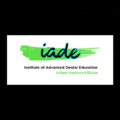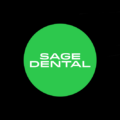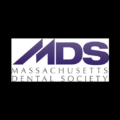While performing a practice analysis for a potential consulting client, I had the opportunity to observe the appointment coordinator scheduling in the computer and then entering the same information in a manual book. I inquired as to why she was doing double entry. She explained that the doctor does not use the computer, and he likes to look at the remainder of the week at the end of each day. She also commented that they both were fearful of missing something important by giving up the book. A closer look pointed out that adequate training had not taken place to ensure that they received an in-depth understanding of the software program. This lack of training, combined with a mindset that only the book provides a total picture, created labor-intensive steps that were a waste of time.

(1) Meeting the initial need to fill the schedule and ensure that patient flow is adequate.
(2) Providing the procedure mix needed to create a productive day, while meeting the treatment needs of the patient.
(3) Implementing time-efficiency scheduling, which maximizes the utilization of the clinical team and facility. Patients are not double-booked, but overlapped according to doctor availability.
CONSIDERATIONS WHEN EVALUATING A SOFTWARE PROGRAM
In the evaluation process, it is important to assess the software’s capabilities in 5 vital areas that impact your ability to schedule at the highest level of efficiency.
(1) Training and Support: Without quality training and effective ongoing support, full implementation of a successful system is in danger. Unfortunately, many dentists cut costs in this area, causing major losses in efficiency due to lack of knowledge. It is imperative that references are checked to ensure that the system has a long-term reputation for sound training and support.
(2) User Friendly: Evaluate how quickly the staff can perform the necessary tasks. Software programs can vary greatly in their ability to streamline the steps needed to complete a task. A labor-intensive system can cause wasted time and a backup of patients waiting for appointments.
(3) Reports and Systems Integration: Determine how quickly and easily you can retrieve information needed for a snapshot of the success of your scheduling system. A few of the overview functions that support scheduling are as follows:
•Patients due for continuing care
•Status of production for any time frame or provider
•Status of goals
•Identification of unscheduled treatment by patient or procedure
•Status of new patients
•Status of substantial procedures scheduled and/or needed for any time frame
•Daily, weekly, and monthly overview of open time
•Identification of patients with financial and/or cancellation alerts
•Access to the quick-call list or tickler file
•Identification of medical alerts
It is essential that medical alerts, diagnosed treatment, financial information, and insurance details be integrated with the scheduling software. All of this information impacts how the patient is scheduled and provides immediate information needed for effective patient interactions.
(4) Smooth, Seamless Experience for the Patient: Check-in and checkout must be time efficient and error free. Confidence in the doctor and staff suffers when errors impact the scheduling system and appointing is a lengthy and/or confusing process.
(5) Ongoing Feedback: The ability to see all aspects of the schedule as it unfolds was a major benefit of the manual book and a definite drawback to computer scheduling in older systems. Very effective programs are now available to show you the status of the day, month, and year in relationship to production by provider, procedure mix, and open time. Constant awareness on a daily basis and quick and easy access are essential.
SCHEDULING IN THE TREATMENT ROOM VERSUS THE BUSINESS DESK
The decision not to install computers in the treatment rooms is often based on lack of space as well as financial and staffing limitations. There is not a right or wrong approach to this decision, and many factors can impact which is appropriate for each individual practice. Although “the paperless office” is often discussed as the ideal, few practices have accomplished this goal in its true form. Most are a hybrid of this concept and continue to maintain physical paper charts and share scheduling tasks between clinical and business staff. This type of practice enjoys the flexibility of scheduling the patient when and where it is most appropriate at the time.
SCHEDULING MULTIPLE PROVIDERS
Most software programs have the ability to identify each provider by character (usually a number or letter) and/or color. Immediate feedback as to the status of each operator’s schedule is most effective when identified by both methods. This is especially helpful if the program can quickly identify open time for a specific provider by day, week, month, or year. This system also allows end-of-the-day reports to be generated by provider, which allows valuable input for analysis.
STABILIZING DAILY PRODUCTION
Wide swings in daily production create stressful days for the entire team. This oscillation is an indication of excessive short-notice cancellations and/or that the only scheduling criteria utilized is filling time. A full schedule that comes together by chance or is patched back together after multiple cancellations can create a high-stress/low-productivity day.
Example:
•2 units of crown and bridge
•2 seats or deliveries
•3 hours of composites and/or RCT
•2 new-patient exams
•1 hour miscellaneous
Successfully meeting the requirements of the daily template ensures that production goals are met and the daily production swings are controlled without sacrificing patient needs.
TIME-EFFICIENCY SCHEDULING
Once the schedule is full 5 to 7 days forward and ideal day scheduling is in place, time- efficiency scheduling is the next step to take production to its greatest potential by maximizing the utilization of the facility and clinical team.
CONCLUSION
Purchasing a software program that provides all of the concepts discussed in this article and ensuring that the staff receives the training needed to utilize these concepts are the keys to maximizing your efficiency, and therefore your productivity. Gone is the stress created from a haphazard day created by a schedule that functions inadequately due to lack of knowledge or system preparation. Today’s computer scheduling has opened the door to creating a daily environment that greatly enhances the quality of the work experience for the entire team and ensures that the desired rewards are within reach.
Ms. Bernhardt is the owner and director of Christene Bernhardt & Associates (CB&A), a practice management firm that provides services in consulting, educational systems, staff training, and workshops for the dental profession. Since 1984 her team has provided in-depth, customized consulting services for hundreds of dentists throughout the United States and Canada. Hands-on programs are customized to the needs of each practice. The CB&A database of practice statistics provides cumulative knowledge and insight as well as clear measurements for success and growth potential. She can be reached at (888) 454-3131 or christene@christenebernhardt.com.









